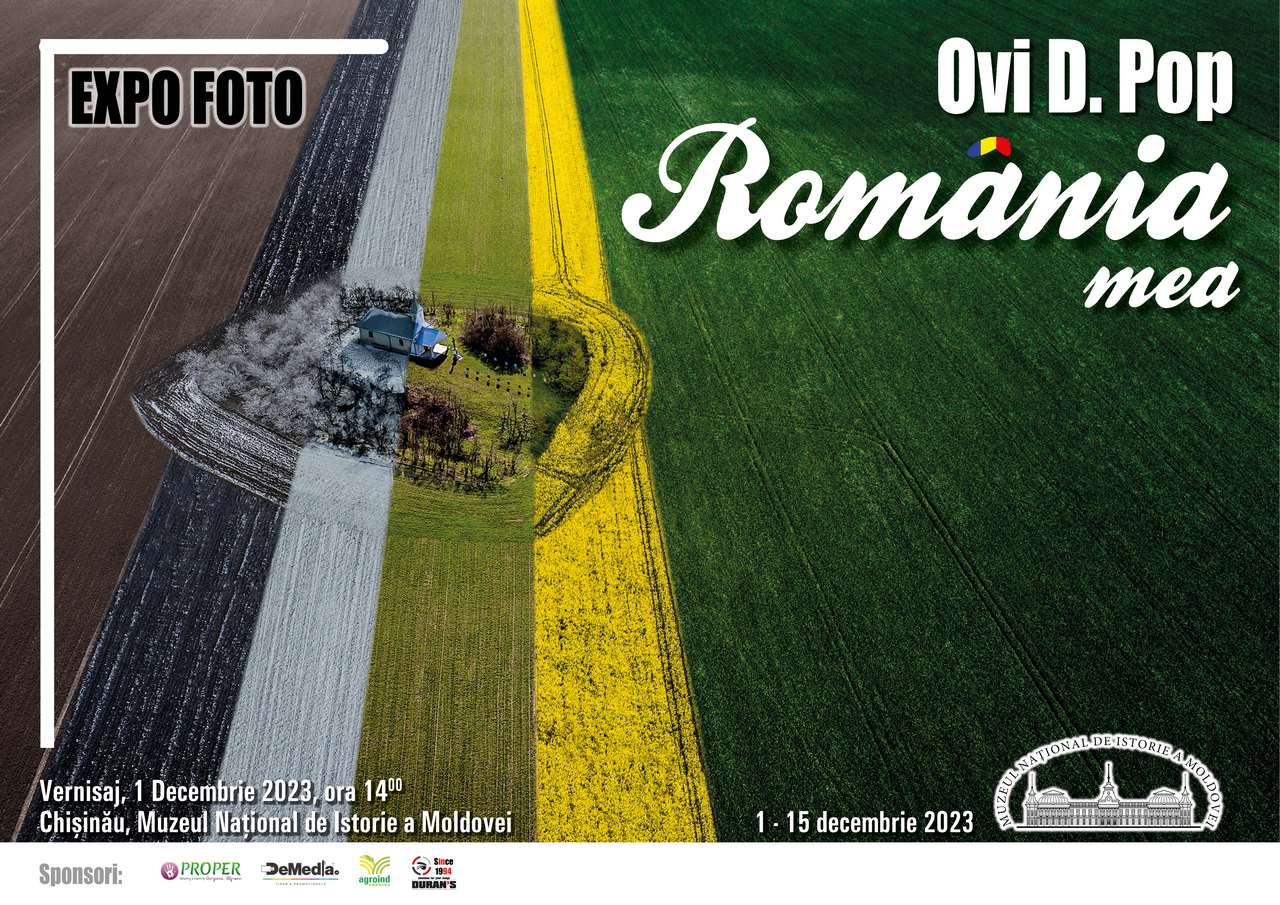 Between December 1-15, the National Museum of History of Moldova has the honor of hosting the exhibition of the Romanian photographer Ovi D. Pop, entitled "My Romania".
Between December 1-15, the National Museum of History of Moldova has the honor of hosting the exhibition of the Romanian photographer Ovi D. Pop, entitled "My Romania".
Born in Oradea on April 9, 1973, Ovi D. Pop is a photographer with over 20 years of experience and who prefers several genres of photographic art: portrait, nude, aerial and monuments. He is the director of the Oradea "Duran's" Publishing House under whose care he published 7 illustrated monographs of Bihor county, works containing over 1,500 photographs of the most representative locations in the county, respectively 6 editions of the Bihor County Tourist Guide, 3 editions of the Oradea album mine, an edition of the Comitatus Bihoriensis album, an edition of the Nude in the City album and many other views and paperbacks reflect his work.
Since 2013, he also focused on artistic photography, managing to meet the criteria for obtaining national and international awards - MAFR (Master of the Romanian Association of Photographic Artists), E.FIAP/g (Excellence de Fédération Internationale de l'Art Photographique) with the rank of gold and MPSA (Master of the Photographic Society of America).
His photos have won over 2,300 awards, of which 640 gold medals/1st place/Trophies in 91 countries. Several personal exhibitions were organized from his photographs in: Oradea, Bucharest (Senate of Romania), Carei, Cluj Napoca, Dărăbani, Valea lui Mihai, Hajduszoboszló, Gyula, Brussels x3, Cernăuţi, Uzhorod, Ljubljana, Singapore and Pingyao, respectively many group exhibitions in: Cluj Napoca, Bucharest, Szeged, Budapest, Bratislava, Kosice, Monteviarchi, Chernivtsi, Uzhorod (UA), Chisinau, Kolkatta, Shenzen, Kunming and in Macau. Ovi D. Pop has judged in International Salons in Romania, Croatia, India, Italy, Australia, China, Georgia, Serbia, Thailand, Hungary, Singapore, Malaysia and Ukraine.
All this, however, the photographer does not quantify in years, but in achievements and in the richness of the moments he managed to capture with the help of light and shadows. The camera is the channel through which he manages to reproduce what he sees with his eyes and soul.
The opening of the photo exhibition "Ovi D. Pop: My Romania" will take place on December 1, 2023, at 2:00 p.m., and can be visited between December 1-15, 2023, at the National Museum of History of Moldova, Chisinau, 31 August 1989 street, 121A.


















































